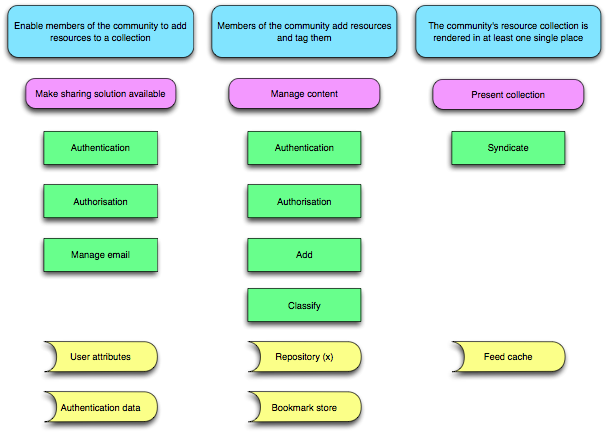data.gov.uk – a portal for UK governmental open data – is clearly a fantastic idea, and has the makings of a real treasure trove. But estimating how far it is in practice, means picking up a stick and poking the beast.
Which data
What it’s all about. To my unscientific eyeballing, the existence of most every dataset of interest is flagged. You can find them too, with some patience and use of the tags. Clicking through to the source quickly shows that most aren’t available to us yet in any shape or form, though. That’s fine, I’m sure something like that just takes time.
What would be good, though, is some indication which ones are available in the navigation or searching. Where available means: queriable through the SPARQL interface, or downloadable as an RDF dump.
Getting at the data
The main means through which you get at the data is via the SPARQL query service provided. That works, but has some quirks:
From experience, the convention for such services would be that you’d provide one at http://mysite.org/sparql, and that you’d get a human SPARQL query form if you go there with a browser, and you get an answer if you fire a SPARQL protocol query at it from the comfort of your own SPARQL client.
There is a human interface at https://www.data.gov.uk/sparql, but machine queries need to go someplace else: http://services.data.gov.uk/{optional dataset}/sparql Confusingly, the latter has a basic but very nice human interface too…
Of more concern is that both spit out either JSON (in theory) or XML, but not RDF. Including XML and JSON is very sensible indeed, because the greatest number of people can suck those formats up and stick them in the mashups they know and love. But for the promises of linked data to work, there is an absolute need for some kind of RDF output.
Exploring the data
In order to formulate the whizzy linked data queries that this stuff is all about, you have to get a feel for what an open data set and its vocabulary looks like. That is a bit lacking as well at the moment: you can ask the SPARQL endpoint for types, and then keep poking, but making the whole thing browsable on something like the OpenLink RDF browser would be even better. I stumbled on some ways of exploring vocabularies, but that didn’t seem to allow navigation between concepts just yet.
There is a forum and wiki where people can cooperate on how to work on these issues, but I couldn’t see how to join them- hence the post here.
So?
If you’re getting rather disappointed by now: don’t. As far as I can see, the underlying platform is easily capable of addressing each of the points I stumbled across. More importantly, all the pieces are there for something truly compelling: freely mixable open data. It’s just that not all the pieces have been put together yet. The roof has been pitched, but the rest still needs doing.
